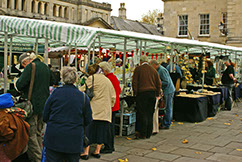A New Way of Life
People living at the site would have been able to get almost anything they needed through trade, including news. In fact, there were some things the site offered that could not be found anywhere else at the time. This was because the scale of Poverty Point was unmatched in its day.
In the Late Archaic period, most people lived in small groups. These people would have known the members of their group very well. This was not quite the case at Poverty Point. At its peak, hundreds of people lived at the site, maybe more. Poverty Point was not just a big settlement, it was a new kind of community. The people who lived and worked at Poverty Point were part of something bigger than themselves.

The amount of work needed to build the site is hard to imagine. Even harder to envision is the kind of commitment, from one generation to the next, that made the site the wonder that it is today. That commitment is part of what makes Poverty Point one-of-a-kind.
The site would have been a destination for some and a home for others. Some families could have lived there for generations. It makes sense that those families would have had a special connection to the earthworks. Yet, there is no evidence that any persons or families were privileged. Instead, people seem to have lived with one another as equals. Life at Poverty Point was a group effort that surely changed the people living there as much as the land itself.
Around the globe, anthropologists (people who study human culture) have explored the ways people trade and exchange things. What they have learned is that trade is more than just a way for people to get needed items. Trade and exchange also help shape people's social relations. Likewise, ceremonies and group construction projects form and renew social bonds between people.

Back
